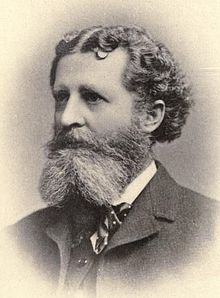George Marx
| George Marx | |
|---|---|
 |
|
| Born | June 22, 1838 Laubach, Hesse, Germany |
| Died | January 3, 1895 Washington, D.C., United States |
| Residence | Washington, D.C. |
| Citizenship | Naturalized American citizen |
| Fields | Arachnology, Acarology, Entomology |
George Marx (June 22, 1838 - January 3, 1895) was a German-born American arachnologist, scientific illustrator and physician. He was regarded as one of the foremost authorities on spiders and highly regarded for his superb scientific illustrations.
Marx was born on June 22, 1838 at Laubach in the Grand Duchy of Hesse, where his father was a court chaplain. At age fourteen he entered a gymnasium (high school) in Darmstadt with the expectation that he would follow his father into the ministry. While at school Marx became interested in botany and displayed such an aptitude as an artist that he was employed to illustrate a book on the local flora. Against his father's wishes, he decided to study pharmacy because it would provide him an opportunity to pursue his interest in botany.
After completing his pharmaceutical studies at Giessen Marx traveled to the United States in 1860. At the outbreak of the Civil War he enlisted in the Union Army and served as a private until the First Battle of Bull Run in July 1861. Afterwards, his expertise in pharmacy and medicine resulted in a transfer to the medical corps where he served as an assistant surgeon. In July 1862 Marx was honorably discharged because of illness and a severe wound.
After receiving his discharge, Marx settled in New York City and worked as a pharmacist for the duration of the war. In 1865 he moved to Philadelphia, started a business, and married Minnie Maurer. While in Philadelphia he became interested in collecting and studying spiders. In 1878, he took a position in Washington D.C. working as a natural history illustrator for the U.S. Department of Agriculture in the Division of Entomology. He earned a reputation as a skilled artist and many of the Division's publications were illustrated with his works. In 1889 he was appointed chief of the USDA's newly established Division of Illustrations. His colleagues said the "plates and figures which adorn his contributions to science are by far the best illustrations of Arachnids that have ever been produced in America".
...
Wikipedia
